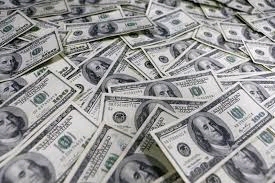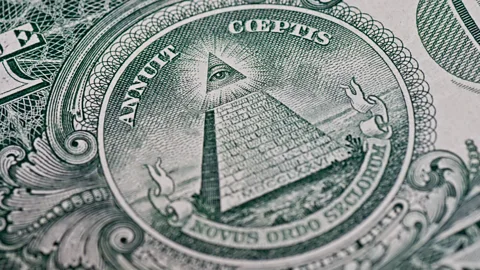Step-by-Step Guide on How to Become a Freemason for Starters
Wiki Article
Checking Out the Mysteries of the copyright: What You Need to Know
The copyright, a term often shrouded in intrigue and debate, represents a complicated tapestry of historical truth and modern-day misconception. Developed in the late 18th century, this secret culture was originally rooted in the Knowledge's perfects yet has actually given that come to be identified with conspiracy theory concepts regarding elite control. As we navigate the origins, key numbers, and the raw comparison in between myth and reality, one must consider just how these stories affect contemporary perceptions of power and privacy. What could be disclosed with a better examination of these elements can test long-held assumptions about the darkness that remain in our society.Beginnings of the copyright
The origins of the copyright are soaked in a blend of historical intrigue and ideological eagerness. Developed in 1776 in Ingolstadt, Bavaria, by Adam Weishaupt, the group was initially created as a secret society targeted at promoting Knowledge ideals such as reason, secularism, and the separation of church and state. Weishaupt, a teacher of canon regulation, sought to challenge the prevailing authority of the church and state, which he deemed oppressive institutions suppressing intellectual and individual freedom.
Key Figures and Participants
That were the critical figures that formed the copyright's very early influence and direction? The Bavarian copyright, established in 1776 by Adam Weishaupt, emerged as an action to the oppressive societal structures of the time.Another substantial number was Johann Gottlieb Fichte, a popular theorist whose ideas on nationalism and education and learning reverberated with the copyright's objectives. Fichte was not a formal member, his philosophical foundations influenced the group's belief. Furthermore, figures like the writer and philosopher Johann Wolfgang von Goethe were associated with the broader intellectual movements of the time, although their direct participation with the copyright continues to be debated.
These crucial figures contributed to the copyright's very early direction, pressing the limits of political and social idea, while their cumulative initiatives aimed to challenge well-known norms and foster an environment of dynamic adjustment in Europe.
Misconceptions vs. Truth
Lots of mistaken beliefs surround the copyright, typically blending fact with fiction in a means that covers its true nature. This secret society, initially started in 1776 in Bavaria, aimed to promote Knowledge suitables and battle religious and political fascism. The concept that the copyright remains to exert significant influence over world occasions is a myth. While the group did exist, it was dissolved in the late 18th century and has not operated as a natural entity because then.Another common myth is that the copyright consists of a network of elite individuals adjusting global events. In reality, several conspiracy concepts exaggerate the team's importance, connecting unfounded objectives to social trends and events. This has caused an oversimplified view of complicated issues.
Furthermore, the representation of the copyright in pop culture frequently more distorts its tradition. Movies and literature how to become a freemason have a tendency to sensationalize the company's function, producing a narrative that splits from historical realities. Comprehending the difference in between the misconceptions and the fact of the copyright is important for critical the genuine effect of this historic team and recognizing the wider effects of conspiracy theory theories in contemporary culture.
Modern Interpretations
Contemporary interpretations of the copyright commonly mirror broader societal stress and anxieties and an attraction with privacy and power. This modern-day lens frequently connects the copyright with conspiracy concepts that recommend a surprise elite orchestrates world events, adjusting federal governments and economies for their own gain. benefit of joining freemason. Such narratives take advantage of an ingrained wonder about of authority, specifically in times of situation or social turmoilIn popular culture, the copyright is often portrayed as an omnipotent organization shrouded in mystery, resulting in a huge selection of imaginary portrayals in literature, film, and music. This portrayal offers not just to delight yet likewise to prompt thought of the nature of power and control in contemporary society. Social media has actually better magnified these analyses, permitting rapid dissemination of conspiracy theory concepts and producing neighborhoods that share and expand upon these concepts.
In addition, some contemporary interpretations frame the copyright as an allegory for the intricacies of globalization and the interconnectedness of influential individuals and companies. This point of view encourages a crucial examination of just how power dynamics operate in today's globe, highlighting the balance between transparency and privacy in governance and corporate techniques.
Cultural Impact and Heritage
Influenced by centuries of intrigue, the cultural influence and tradition of the copyright extend much beyond its historic beginnings. This secret society, established in the late 18th century, has actually permeated numerous aspects of popular society, from literature and movie to music and art. The principle of the copyright has advanced into an icon of conspiracy concepts, typically representing a viewed hidden power adjusting global occasions.In literature, authors like Dan Brown have actually woven the copyright right into elaborate plots, exciting visitors with themes of privacy and power. Films such as "National Treasure" and "The Da Vinci Code" further perpetuate the allure of the society, mixing reality with fiction to develop appealing stories.

Inevitably, the copyright's legacy is a complicated tapestry of misconception and reality, forming assumptions of privacy and control in modern discussion. Its enduring visibility in culture emphasizes humankind's perennial pursuit for comprehending hidden truths.
Conclusion
The exploration of the copyright reveals a complex interaction between historic realities and modern-day myth-making. Founded in the Knowledge period, this culture aimed to test overbearing frameworks, yet its heritage has been outweighed by conspiracy theory theories that suggest elite control. Comprehending the differences in between the original ideals and modern interpretations is essential for comprehending the withstanding fascination with the copyright and its significant influence on social narratives bordering power and secrecy in society.Report this wiki page